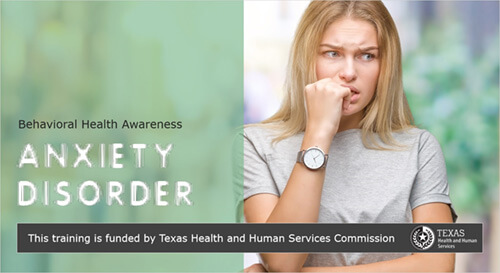Over 40 million adult Americans have an anxiety disorder, making this type of mental health condition the most common in those older than 181. Anxiety disorders usually begin during late childhood or early adolescence, but they can start at any age.
Unfortunately, more than 60% of people struggling with anxiety disorders don’t receive treatment1. This is a true tragedy because these conditions are extremely treatable. We hope that increasing education about anxiety and the multiple treatments available will result in more people getting the help they need.
Fear and anxiety, in specific circumstances, are nothing to worry about. Fear triggers our natural “flight, fight, or freeze” response, which gets us ready to either run away from or stay and fight a serious threat. Fear and anxiety are adaptive responses that are necessary for survival.
More than 60%
of people struggling with anxiety disorders don’t receive treatment1.
However, sometimes, people have fear and anxiety responses that are triggered without any threats, or they may see a threat as more dangerous than it actually is. For people who struggle with anxiety conditions, their fear and worry get in the way of their ability to function and compromises their ability to enjoy life. Fortunately, there is an abundance of support and multiple treatment options available for managing anxiety.
Common Signs and Symptoms of Anxiety
- Panic or fear
- Feeling nervous, restless, or tense
- Increased irritability
- Rapid breathing
- Increased heart rate
- Coldness, numbness, or tingling in hands and/or feet
- Sweating
- Sleep problems
- Having trouble controlling worry or thinking about things other than the worry
- Having the urge to avoid things that trigger the worry
For additional information on anxiety and the various forms of treatment available, visit:
- The National Institute of Mental Health (NIMH) page on Anxiety disorders.
- Anxiety and Depression Association of America (ADAA) general information on anxiety disorders.
- Anxiety and Depression Association of America (ADAA) tips on coping strategies for anxiety disorders.
- Stanford Medical School resources for parents of children with anxiety disorders.
- Everydayhealth.com list of resources for anxiety disorders.
- Behavioral Health Awareness online training module on Anxiety Disorders.
If you experience difficulty accessing care or if you’re having issues with your health plan, the Texas Department of Insurance and the Texas Health and Human Services Commission’s Office of the Ombudsman might be able to help. They can also help you learn more about your rights.
Sources
- Anxiety and Depression Association of America: Facts and Statistics.
https://adaa.org/about-adaa/press-room/facts-statistics

Learn more about Anxiety and other behavioral health conditions at our eLearning Hub. The quick, informative courses are designed to equip you with knowledge, resources, and hope for the future – for yourself or for someone else you care about.
